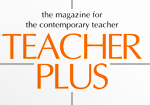Suma Vivekanandan
The place and face value of numbers is a confusing concept for little children. Try these simple ideas in the classroom to help them understand the concept.
Category: Primary Pack
Making time for music
Ranjeeta Prajapati
Listening to music has many benefits. While it is primarily considered a tool for entertainment, music can also help one relax, stimulate the mind and perk you up. Have you considered using music in your classroom?
Paper-start reading – a joyful experience
Nabanita Deshmukh
Getting children into the habit of reading and helping them sustain it is an extremely difficult task these days. The benefits of reading are immense and that is why we share with you a few simple games to help you and your children get started on the reading path.
The plus and minus of fractions
Suma Vivekanandan
There are many concepts of study where the scope for confusion is large. One such is fractions in mathematics. A teacher shares how she taught her students addition and subtraction of fractions in a simple manner, leaving no room for confusion.
The power of storytelling
Shaveta Azad
Teachers and educators are great storytellers. When a teacher tells a story, a child begins to create visuals in her mind and makes her own interpretations in order to understand the story better. Children also tend to grasp difficult concepts when stitched into stories. But it is also up to the teacher to engage in reflective activities after storytelling to keep track of what the children have learnt.
Possibilities of play
Akhila Khanna and Devika Bedi
Your students are as young as five and six. Already trapped inside their homes, they may not be the ideal students that you looked forward to. In these days of online education, how can we keep these children meaningfully engaged? How can we harness their energies? Process drama can help students and teachers bond as they discover and learn so many things together – creative skills, articulation, critical thinking, problem solving, etc.
Second language acquisition through folklore
Smriti Dutt
Folktales and fairy tales are both loved by and familiar to all. This writer shares with us how she used this familiarity and interest to teach her students the English language.
Inside-out games
Nabanita Deshmukh
How can teachers bring in some fun element to games played inside the classroom and also ensure that the games are connected to the real world? The trick is for teachers to adapt and be creative while choosing the games and make them an integral part of their teaching.
Integrating art with language
Gita Krishnan
Most children are naturally drawn to some art form or the other. Some like to dance, some sing, some are constantly drumming their fingers, some like to draw and paint. Let us leave behind the old idea that art is only for pleasure. Art can become a wonderful teaching medium, if we care to use it properly. Here are a few tips on how you can use different art forms to teach the English language.
Sprouting kindness in classrooms
Nabanita Deshmukh
Should children be taught to be kind? The school environment can be stressful, and children often find themselves being teased or ignored. How can they learn to be empathetic and compassionate to their peers, siblings, parents and teachers? Lessons on kindness can have a great impact on children’s well- being and the way they perceive the world. Here are some creative exercises that can put the smile back on a child’s face.
